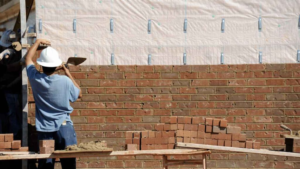Choosing Idaho Falls Moving Companies are a critical steps in your relocation process. Whether you need local or long-distance service, you want a professional, reliable moving company with licensed and insured employees.

You can find out about a company’s reputation by reading reviews on review websites. You can also get recommendations from friends and family.
Many professional moving companies offer a wide range of services that can be tailored to your unique needs. These services can include everything from specialized handling to storage solutions. In addition, some of these companies are licensed and insured, which can provide you with additional peace of mind. Whether you’re moving across the street or the country, choosing the right company is crucial to ensuring your move goes smoothly.
A full-service moving company will provide a team of experienced professionals who can help you with all aspects of the relocation process. This includes planning and consultation, packing and unpacking, furniture disassembly and reassembly, loading and unloading, and transportation. They can also assist with specialty items such as antiques and artwork. Some moving companies also offer custom crating and climate-controlled transportation.
One of the most important services that moving companies provide is professional packing. They can provide high-quality packing materials, including bubble wrap, packing paper, and sturdy boxes to protect your belongings from damage during transit. This service can save you time and money, and it can be especially helpful if you have fragile or valuable items.
Another important service that moving companies provide is a truck or container for transporting your belongings. This option is especially useful for local moves, where the company will drive a truck directly from your old home to your new one. Some companies will even deliver the truck to your door. Other options include buying a portable container that you can fill up yourself and having the company transport it to your new home or office.
Long-distance moves require more planning and specialized services, such as storage solutions. Often, the cost of these services is based on weight and distance. Typically, these services are more expensive than local moves.
Moving companies also offer a variety of storage services, which can be helpful if you’re downsizing or your new home isn’t ready to receive your belongings. Some of these services involve storing your belongings at the company’s warehouse, while others offer storage solutions at local vendors. Some companies even offer a combination of these services, such as picking up and transporting your pre-packed containers, then storing them at a local facility until you’re ready to move them.
They are licensed and insured
A licensed moving company can guarantee the safety of your belongings during transport. Their employees are trained to pack, load, and unload your items safely. They also know how to protect fragile or valuable items from damage. Moving companies will make sure to use high-quality packing materials, such as bubble wrap and packing paper. This saves you time and effort from having to source these items yourself. In addition, a licensed mover will comply with federal and state regulations governing the transportation of goods.
You can check the legitimacy of a moving company’s license by verifying their credentials. Ask them to display their Department of Transportation (DOT) number, and ask for proof of insurance. Also, ask if they’re a member of any professional associations. Many of these associations have websites that let you look up their members’ licenses and insurance policies.
Licensing is a crucial step in the transportation business, as it ensures compliance with regulatory requirements and consumer protection. It also builds trust and provides a channel for customer complaints. Additionally, a license allows a company to negotiate with customers on price and service.
There are several different types of licensing and insurance policies that moving companies must comply with. The most common are general liability and workers’ compensation. General liability coverage protects the customer’s property while in transit or storage, while workers’ compensation covers injuries to employees. Other insurance policies include commercial auto, cargo liability, and professional liability.
In addition to a license, movers must obtain state operating authority and file tariffs or rate schedules with local regulatory bodies. The frequency of these filings varies by state. Moreover, interstate moving companies must have USDOT and Motor Carrier (MC) numbers and be registered with the FMCSA for intrastate operating authority.
Some moving companies will require you to pay a deposit upfront, but it’s important to read the fine print. Make sure that the company doesn’t require a large deposit, and that it doesn’t have hidden fees. Alternatively, you can use a full-service moving company that offers a flat-rate quote. This will give you a clear idea of how much your move will cost, and it may be less expensive than using an hourly-based company.
They have a professional website
In the moving industry, a professional website is essential for building trust and generating business. The website must be clear, concise and feature a clean, mobile-friendly design that’s easy to navigate. It also needs to be informative and provide social proof in the form of customer testimonials. A good website will be well-organized and include a comprehensive list of services offered by the company.
The moving industry is a thriving one with millions of people needing relocation assistance each year. As a result, it is highly competitive with many established companies and new entrants competing for customers. The competition can lead to price pressures and other operational challenges, such as the cost of operating a fleet of trucks and insurance premiums. Fortunately, there are ways to overcome these hurdles and start your own moving company successfully.
A successful moving company will have a systematic approach to daily operations. This includes coordinating with clients, scheduling and dispatching moving crews and maintaining proper documentation. It will also keep clients updated throughout the process and address any concerns or issues promptly.
When hiring a moving company, it’s best to get multiple estimates and read online reviews. This will help you avoid scams, such as companies quoting absurdly low prices. It’s also a good idea to check with the Better Business Bureau to ensure that they’re registered and legitimate. A reputable company should have a high BBB rating and a positive reputation in the community. It should also be licensed and insured. This will protect you from fraudulent movers.
They use content marketing
Creating content that speaks to customers is among the most effective marketing strategies for moving companies. It can help them stand out from the competition, overcome common barriers to trust, and establish themselves as industry leaders. It also helps them attract potential clients and convert them into long-term loyal customers.
One of the most important content marketing strategies for moving companies is to create useful guides for their clients. These can be in the form of blog posts, videos, infographics, or PDFs. This type of content is particularly helpful for educating clients on complex topics, such as how to pack and load their belongings. Moreover, it can help them feel confident and prepared for their move. It can also boost their search engine rankings and increase organic traffic.
Social media is an effective marketing tool for moving companies because it allows them to connect with their target audience on a personal level. It also offers the flexibility of updating and monitoring campaign performance in real-time. This way, you can optimize your content and maximize its effectiveness.
Aside from social media, pay-per-click (PPC) advertising is an effective moving company marketing strategy. PPC ads allow you to target specific demographics, interests, and behaviors to ensure that your content reaches the right people. It is an excellent way to reach potential clients, especially during peak moving seasons.
Customer testimonials are another powerful marketing strategy for moving companies. They can help you build trust and increase your credibility by showing that your customers are satisfied with your service. You can use these testimonials on your website, Facebook page, and other social media platforms.
Content marketing is an essential component for any business, including moving companies. It can help you generate leads, build brand awareness, and increase your conversion rate. It can also improve your SEO by increasing the number of high-quality backlinks to your website. However, it is important to remember that quality is more important than quantity. Poor-quality content can damage your reputation, so always focus on creating quality content that provides value to your target audience.








